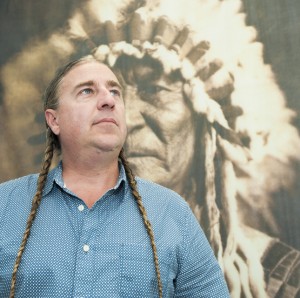American Indian Studies Program Sheds Light on Present-Day Native People
Many people know the general narrative about Thanksgiving taught in U.S. classrooms, recounting the Native Americans’ supposed feast with newly arrived Europeans hundreds of years ago. But how many people know about the current culture and lives of Native Americans today?
California State University, Northridge’s American Indian Studies Program gives the community a path to explore a deeper and more holistic understanding of the country’s indigenous populations.
“Unlike so many other classes that teach about Natives, [the program] tries to tell the other side of the story, and teach the native perspective,” American Indian Studies Program Director Brian Burkhart said. “That’s one of the things that makes it really important. Over time, [the program] has become less [a] curriculum that is put together and more something that is much deeper in methodology.”
The program provides courses that explore current social, legal and cultural elements of native people living as a sovereign people within the U.S.
Courses include American Indian Law and Policy (AIS 304), which discusses current legal policies that tribes face when confronting federal and state laws; Contemporary American Indian Social Issues (AIS 401), which discusses modern-day social concepts that native people face in the U.S.; and American Indian Philosophy (AIS 333), which delves into the understandings of the impact of oral traditions, facing European expansion in North America and modern indigenous thought.
The program also provides courses on indigenous literature and history.
“All the things that happened in the past are still in the present,” Burkhart said. “The legal and economic realities for Native people are part of this larger structure that began in 1492. If we don’t understand that [construct], then we can’t understand how and who we are as a country and how it shaped a part of the very present-day reality.”
The upcoming CSUN Pow Wow on Nov. 28 is one way that the program tries to educate the community about indigenous cultures.
“We are trying to not only educate students, but support community organizations as well,” Burkhart said. “The Pow Wow is one way to do that.”
Social media is also giving native people an impactful vehicle to make their voices heard, Burkhart said. He pointed to the band No Doubt’s 2012 music video “Looking Hot,” which featured lead singer Gwen Stefani wearing a headdress and getting tied up by her band mates, who wore cowboy attire. The video garnered negative comments from Native Americans on YouTube, and within 24 hours, the band took it off the site.
“[The band was] not looking at the issues that one in three Native women will be raped and 80 percent of the aggressors are non-Native,” Burkhart said.
“Imagine what would have happened if a few Native people articulated the problems without social media. It would have maybe taken years for anything to happen. [Social media allows] us to communicate with each other so instantly that there is a kind of voice that we can share that has never been as apparent before.”
While there is more visibility for Native people today, Burkhart said there is still much work to be done for a true, deep understanding of indigenous cultures.
“Sometimes it’s very frustrating, because it seems like such an uphill battle,” he said. “You are taking one student at a time, and behind that one student there seems to be millions of others who don’t know anything and are still in the dark. But the potential is there. You can make serious change — you just have to be patient.”


 experience
experience